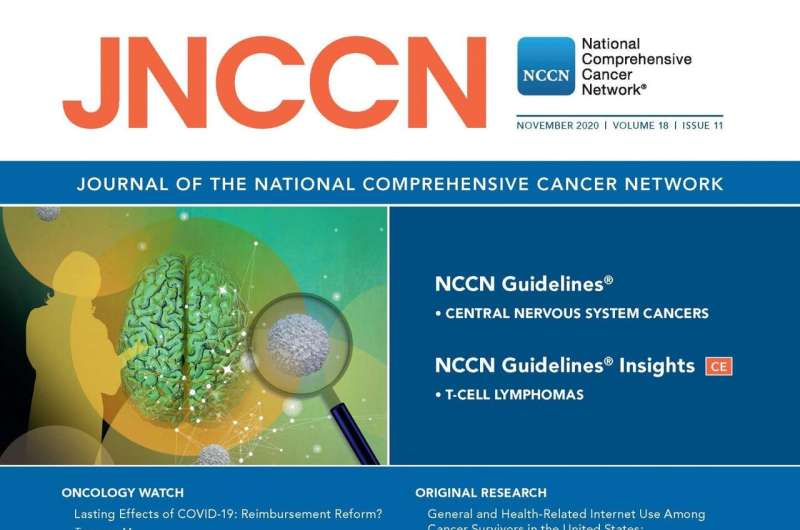Study evaluates cost-effectiveness of olaparib for metastatic pancreatic cancer

Studies have shown that utilizing a PARP inhibitor in the management of patients with metastatic pancreatic cancer who harbor BRCA 1/2 mutations is clinically beneficial. New research in the November 2020 issue of JNCCN—Journal of the National Comprehensive Cancer Network sheds further light on this subject through cost-effectiveness analysis. The investigators seek to identify patient subgroups with the highest relative cost-effectiveness, through models based on efficacy and toxicity data from the Pancreas Cancer Olaparib Ongoing (POLO) trial, and measuring it against cost per quality-adjusted life year (QALY).
"With the present clinical evidence, olaparib should be prescribed for patients with metastatic pancreatic cancer harboring a germline BRCA 1/2 mutation, especially after the first-line platinum-based chemotherapy has been successfully completed," said researcher Lizheng Shi, Ph.D., School of Public Health and Tropical Medicine, Tulane University. "Our economic analysis found that olaparib might be a cost-effective option for patients, particularly if we select for optimal sub-groups, such as those who completed at least 16 weeks of continuous first-line platinum-based chemotherapy."
Bin Wu, Ph.D., of Shanghai Jiaotong University in China, who co-authored this study also pointed out: "The cost-effectiveness of olaparib as measured by cost-per-QALY is reasonably close to the commonly used willingness-to-pay thresholds. The value of olaparib maintenance would be even more attractive if the price were lower."
The researchers calculated incremental cost-utility ratios (ICUR) for patients taking maintenance olaparib versus those taking a placebo. Medical costs included drug acquisition, costs attributed to health states, costs for managing adverse effects, and costs for end-of-life care. All were calculated and considered based on 2018 U.S. dollar values. Modeling suggested that maintenance olaparib would be cost-effective in certain scenarios, using a threshold of $200,000 per QALY gained.
"While there is emerging evidence that precision medicine is relevant to subsets of patients with advanced pancreatic cancer, definitive results to support the cost-effectiveness of maintenance olaparib is lacking," commented Robert A. Wolff, MD, The University of Texas MD Anderson Cancer Center. Dr. Wolff is a member of the NCCN Guidelines Panel for Pancreatic Adenocarcinoma and was not involved in this study. "Cost-effectiveness analyses of PARP inhibitors used in similar patient populations with recurrent ovarian cancer have been negative. Thus, either improved patient selection for maintenance olaparib or reduced drug costs are likely necessary to establish olaparib as a cost-effective therapy in metastatic pancreatic cancer."
More information: Bin Wu et al, Cost-Effectiveness of Maintenance Olaparib for Germline BRCA-Mutated Metastatic Pancreatic Cancer, Journal of the National Comprehensive Cancer Network (2020). DOI: 10.6004/jnccn.2020.7587

















